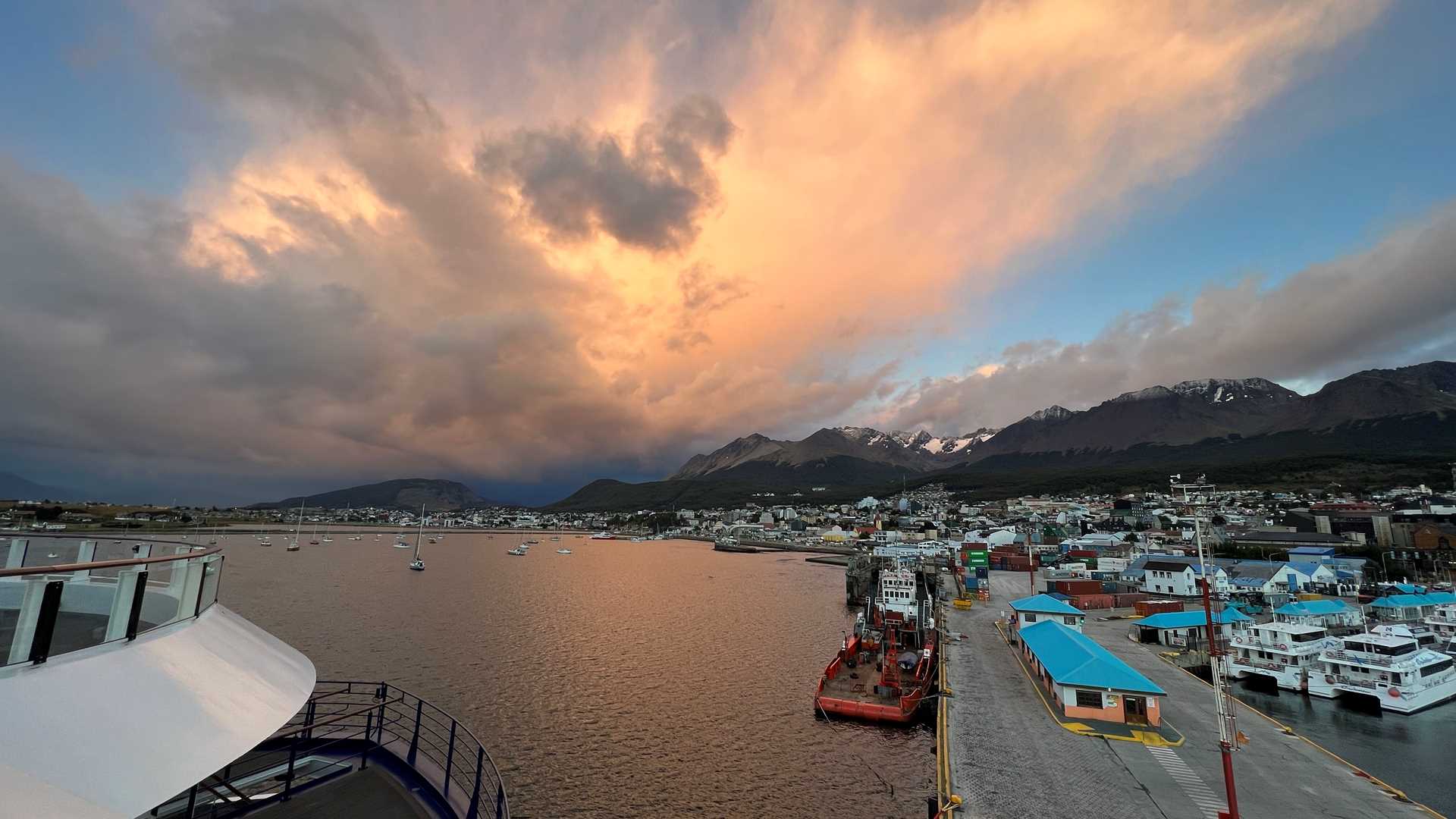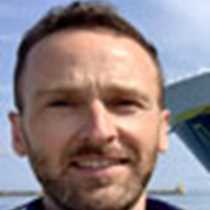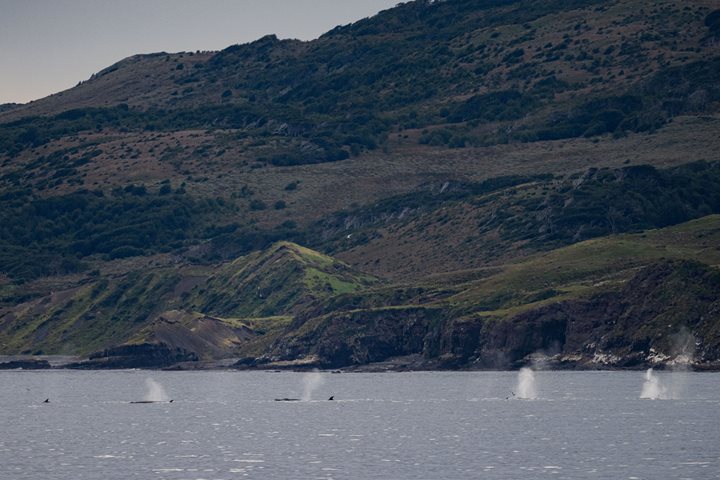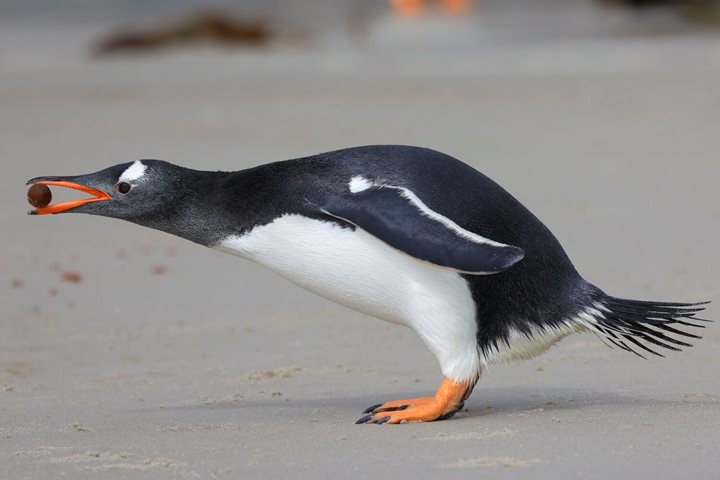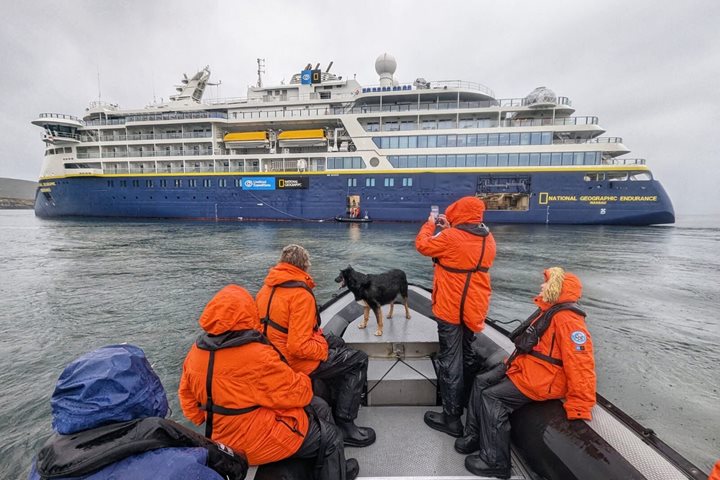Today was our final day on this amazing voyage to South Georgia and the Falkland Islands. We awoke to the most beautiful sunrise over the city of Ushuaia, the world’s southernmost city and the capital of Tierra del Fuego.
This morning we had the fantastic opportunity to visit a local maritime museum here in Ushuaia for a private opening. Afterwards, we enjoyed a wonderful drive through the nearby Tierra del Fuego National Park.
After a relaxing afternoon onboard National Geographic Resolution, we were treated to tours of the Bridge, and then a special wine tasting in Tupaia with our incredible bar team. To round out our day, the captain finished our expedition in style with a fabulous cocktail party. We toasted our adventures to some of the most remote islands on the planet.

